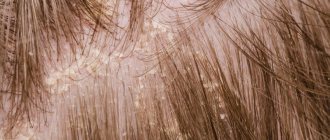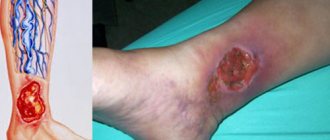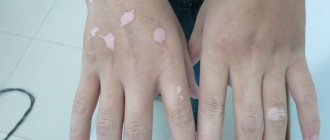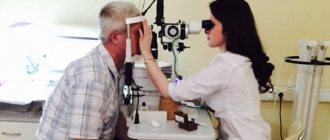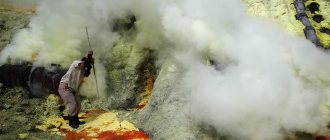Causes
The causative agent of sycosis is considered to be staphylococcus , which is part of the normal microflora of any person. Under certain circumstances, this bacterium begins to actively multiply and provoke the occurrence of skin diseases. In the case of sycosis, it affects the hair follicles . There are certain factors that contribute to infection. This:
- Any damage to the skin
- Rhinitis
- Conjunctivitis
- Problems with the endocrine system
- Nervous disorders
- Stress, emotional stress
- Dysfunction of the sebaceous glands
- Skin laxity
- Sloppy shaving
- Injuries
- Skin contamination in the scalp
- Hair removal with tweezers
- Improper antiseptic treatment of scratches and cuts
- Irritation after a long runny nose
- Reduced immune system
Physiotherapeutic procedures
Physical therapy methods are included in the complex of measures for the treatment of nasal infections. Among them, those that are aimed at activating intracellular processes in the affected area are effective:
- Ultraviolet irradiation of the area of localization of sycosis is carried out for fifteen minutes. It stimulates the activity of biochemical processes in cells, improving blood flow. The procedures are carried out every two to three days, exposing the area to radiation with a gradual increase in dose.
- Using the method of local darsonvalization, they influence the activation of metabolic processes in tissues. The electrode is smoothly passed over the skin for five to ten minutes. They also use a non-contact, spark method. An improvement in the condition of the nasal tissues is observed after five procedures.
- UHF therapy is based on exposure to a high-frequency electromagnetic field. The method is effective against inflammation and does not cause side effects. During the session, capillaries expand, swelling is relieved, and pathogenic flora in the vestibule of the nose is reduced.
Sycosis must be treated in a complex manner, under the supervision of a specialist. Indeed, often, the wrong selection of treatment methods leads to complications - eczema, seborrhea. And relapses of inflammation are common.
Symptoms of sycosis
Sycosis by a standard clinical picture. This disease manifests itself with an acute onset, usually affecting the hairy part of the face, most often the area of the mustache and beard. The following symptoms are possible:
- Skin inflammation
- Hyperemia
- Edema
- Painful sensations
- Slight itching
- Burning sensation
- Increased sensitivity
- Red ulcers appear
- Yellowish-greenish crusts appear
All manifestations of sycosis begin suddenly and also end abruptly. Relapses may occur after a certain time.
Symptoms
Nasal sycosis usually occurs in a chronic form. During an exacerbation of the pathology, the patient complains of burning and itching in the nostrils and at the entrance to the nasal cavity. The skin and mucous membranes swell greatly. Red rashes appear, which then turn into pustules. Over time, they break through and greenish or yellowish crusts form in their place.
The disease is also accompanied by the following symptoms:
- It becomes difficult for the patient to breathe through the nose.
- The mucous membrane of the nostrils is felt dry.
- The patient is experiencing severe discomfort in the nasal passages.
If the causative agent of sycosis is not staphylococcus, but the fungus Trichophyton, then painful nodules form on the skin and mucous membranes. When pressed, purulent contents easily come out of them. Doctors call this sign the “honeycomb symptom.”
In severe cases of sycosis, the patient's general condition sharply worsens. There is an increase in temperature to + 37.5 - +38 degrees, enlarged lymph nodes, severe pain in the area of inflammation, radiating to the forehead and upper jaw.
Diagnostics
Diagnosis of a disease such as sycosis is carried out by a dermatologist. To do this, a visual examination is carried out, the patient is interviewed, an anamnesis is collected, and the clinical picture of this pathology is studied. Additionally, microscopy of the skin is performed, cultures are taken, and a cultural examination of the abscesses is carried out. You need to have your blood tested and tested for sensitivity to antimicrobial agents. In case of severe disease, you will need to consult a mycologist or infectious disease specialist.
Types of sycosis
There are 3 main types of this pathology, depending on the manifestations and course of the disease. This is sycosis:
- Ordinary . This is a subtype of staphylococcal pyoderma, which is characterized by classic symptoms
- Lipoid . First, follicular ulcers appear, resulting in necrosis of the hair follicles and sebaceous glands. This disease is long-term and chronic.
- Parasitic . In this case, a small area of the skin is affected, immunity may be formed, and cases of spontaneous recovery as a result of strengthening the immune system are not uncommon.
Mechanism of disease development
The onset of the disease is characterized by the appearance of small pustules on the hair follicles. They are distinguished by their pointed shape, and the surface around them turns red. The lesions begin to enlarge, and bright red plaques form on them. When the pustules open, erosions develop in their place.
This disease often becomes chronic. This is due to the fact that new ones begin to form in the area of the opened pustules. Because of this, the disease can last for several years, with long periods of remission.
Patient Actions
At the first manifestations of this disease, you need to make an appointment with a dermatologist and undergo the necessary examinations. It is required to follow a certain diet, exclude the consumption of spicy and spicy foods, as well as alcohol. Do not interrupt the antibiotic therapy prescribed by the doctor or reduce the dosage, as this can provoke a relapse and the emergence of antibiotic-resistant types of staphylococcus. You can use effective traditional methods of treatment and strengthening the immune system if there are no contraindications.
Treatment of sycosis with folk remedies
To treat sycosis, you can use quite effective folk methods. Medicinal infusions and decoctions will help strengthen the immune system, restore the normal functioning of all body systems and sebaceous glands. Such remedies promote rapid recovery, the maximum effect is achieved when combined with drug therapy. To eliminate itching, burning and other unpleasant symptoms, you can use ointments, lotions, lotions and other external remedies based on medicinal herbs. They promote rapid healing and prevent complications from developing.
Periwinkle infusion
If sycosis occurs, sore skin can be treated with an infusion of periwinkle plant material. To prepare it, add 200 ml of boiling water to 1 tablespoon and place on low heat for 30 minutes. However, do not bring the liquid to a boil. Then the solution is cooled and used as a lotion to rub the affected areas of the skin.
Celandine for the treatment of sycosis
To make a medicine for sycosis based on celandine, you need to pour the mixture of herbs and roots into a half-liter jar, filling it a quarter full. Then pour boiling water and cover the jar with a towel. You need to wait until the liquid cools completely, then strain. Take the finished product 3 times a day before meals, 15 ml. Before this, the solution must be diluted in 100 ml of clean water. This infusion can be used externally by pouring it into a warm bath and taking it for 10-15 minutes. This will help speed up the healing of skin rashes. Juice, which is consumed 20-25 drops diluted in plenty of water, also helps a lot.
Infusion of succession
If suppuration, itching, burning or other symptoms of sycosis appear, it is recommended to take medicinal baths or make lotions with a decoction of the string. To do this, 100 g of the herb of this plant is crushed and 400 ml of boiling water is poured. The solution is set aside in a water bath, the liquid is simmered in it until it begins to boil, after which it is kept for about a quarter of an hour. After this, the prepared product is left to cool for 30 minutes. The liquid is filtered and boiled water is added until 500 ml of decoction is obtained. A similar solution can be poured into a warm bath or made into a small bath. You can also use this drug as a compress or lotion, applying a bandage soaked in the product to the affected areas of the skin. It is also recommended to take it orally to enhance the effect, 100 ml before meals.
Sea buckthorn ointment
To cure sycosis, you need to make a medicinal ointment based on sea buckthorn fruits. To do this, 10 ml of oil, which is squeezed out from the berries of this plant, must be mixed with 20 mg of carotene. The prepared mixture is applied in a thin layer to the affected surface of the skin. It has an effective analgesic, healing and restorative effect, and prevents the occurrence of complications.
Spruce needles to cleanse and strengthen the body
To prepare a medicine for sycosis, you need to finely chop 1 tablespoon of spruce needles and pour 1 glass of boiling water. Boil the solution for about half an hour, after which it sits warm for another 3 hours. Use 100 ml of the product 3-4 times a day. To enhance the effect, you can make medicinal baths or use them as lotions.
Aquilegia flowers and leaves
To make a healing remedy for sycosis, you will need leaves and flowers of Aquilegia officinalis. You need to brew 40 g of raw material in 120 ml of boiling water, then simmer in a steam bath for about half an hour. Then strain and pour into a small container and store in the refrigerator. Use the liquid to wipe problem areas of the skin 2-3 times a day. You can also grind 70 g of dried aquilegia herb, then pour 900 ml of cool water into this plant material. The solution should be placed in the refrigerator for 10-12 hours. After steeping, place on the stove, bring to a boil, and immediately strain. You need to take the product for medicinal purposes twice a day, 45-50 ml.
Hemlock stork for sycosis
To treat sycosis, it is necessary to collect the ground part of the hemlock, dry it and crush it to a mushy state. Then 60 g of finished raw material is mixed with 100 ml of rendered animal fat. All ingredients are thoroughly mixed, then poured into a glass jar and placed in a cool place for 5 days. Then the fat is heated and strained. The prepared ointment is applied to the affected areas of the skin in a small layer once a day.
Smoker decoction
To strengthen the immune system and speed up recovery from sycosis, you need to dry the above-ground part of the fume and finely chop it. For 45 g of such raw material, add 500 ml of boiling water and place in a water bath for about 15 minutes. After this, the solution is completely cooled, filtered and taken orally for medicinal purposes, 150-180 ml three times a day.
Prevention
As effective preventive measures to prevent sycosis, it is recommended to follow basic hygiene rules, eat properly, nutritiously, and avoid injuries and cuts to the skin. It is necessary to properly treat the face after shaving and other violations of the integrity of the skin. Any chronic diseases should be treated promptly and completely; it is advisable to exclude stressful situations. It is necessary to strengthen the immune system, do not abuse alcohol, spicy or spicy foods.
General information
Sycosis, or folliculitis, of the nasal vestibule is a relatively common disease in otolaryngology and dermatology, occurring everywhere. According to statistics, this is the most common form of pyoderma in this area of the face. Most often, sycosis occurs among people in the middle age category - from 30 to 55 years. Mostly males are affected, which is associated with trauma to the skin during shaving. About 35-55% of cases of the disease are associated with acute or chronic lesions of the mucous membranes of the nose and paranasal sinuses. Complications are rare - less than 5% of patients.
Contraindications
Do not use herbal remedies to treat sycosis if you have an allergic reaction to any herbal component. If the condition worsens, the itching worsens, or additional symptoms appear, you should stop this treatment and seek medical help. Infusions and decoctions should be taken with caution in the presence of any pathologies of internal organs or severe chronic diseases. Before using traditional methods of treating sycosis, it is recommended to consult a dermatologist.
Rating 5.00 (1 Vote)
